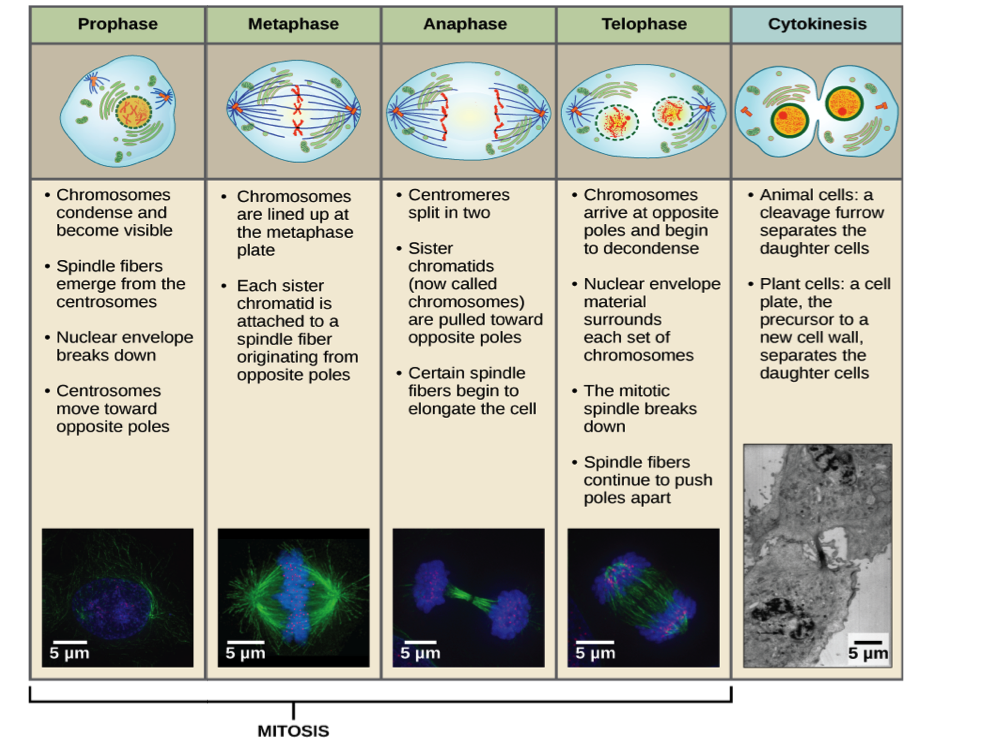| << Chapter < Page | Chapter >> Page > |
In the G 2 phase , or second gap, the cell replenishes its energy stores and synthesizes the proteins necessary for chromosome manipulation. Some cell organelles are duplicated, and the cytoskeleton is partially dismantled to provide building blocks for the mitotic spindle. There may be additional cell growth during G 2 . The final preparations for the mitotic phase must be completed before the cell is able to enter the first stage of mitosis.
To make two daughter cells, the contents of the nucleus and the cytoplasm must be divided. The mitotic phase is a multistep process during which the duplicated chromosomes are aligned, separated, and moved to opposite poles of the cell, and then the cell is divided into two new identical daughter cells. The first portion of the mitotic phase, mitosis , is composed of five stages, which accomplish nuclear division. The second portion of the mitotic phase, called cytokinesis, is the physical separation of the cytoplasmic components into two daughter cells.
Mitosis is divided into a series of phases—prophase, metaphase, anaphase, and telophase—that result in the division of the cell nucleus ( [link] ).

During prophase , the “first phase,” several events must occur to provide access to the chromosomes in the nucleus. The nuclear envelope starts to break into small vesicles, and the Golgi apparatus and endoplasmic reticulum fragment and disperse to the periphery of the cell. The nucleolus disappears. The centrosomes begin to move to opposite poles of the cell. The microtubules that form the basis of the mitotic spindle extend between the centrosomes, pushing them farther apart as the microtubule fibers lengthen. The sister chromatids begin to coil more tightly and become visible under a light microscope. Also, each sister chromatid attaches to spindle microtubules at the centromere via a protein complex called the kinetochore.
During metaphase , all of the chromosomes are aligned in a plane called the metaphase plate , or the equatorial plane, midway between the two poles of the cell. The sister chromatids are still tightly attached to each other. At this time, the chromosomes are maximally condensed.
During anaphase , the sister chromatids at the equatorial plane are split apart at the centromere. Each chromatid, now called a chromosome, is pulled rapidly toward the centrosome to which its microtubule was attached. The cell becomes visibly elongated as the non-kinetochore microtubules slide against each other at the metaphase plate where they overlap.

Notification Switch
Would you like to follow the 'Principles of biology' conversation and receive update notifications?